


Think Tank Highlights #GlobalDefenseDynamics #USMilitaryDynamics #RussianMilitaryDynamics #TaiwanUpdates #AvailableInWeChatStore
#SouthKorea #Raytheon #Japan #ElectronicWarfare #NortheastAsiaMilitaryDynamics #Drones

The Future of Urban Warfare ISR: Drones, Sensors, and Shooters
Author: Military Eagle Think Tank Member Source: Military Eagle Dynamics
Urban warfare is the warfare of today and tomorrow. The most significant conflicts in the past three years have occurred in urban areas, foreshadowing the battles to come.
From September 27 to November 10, 2020, Azerbaijan fought against Armenian forces in the Second Nagorno-Karabakh War, where Azerbaijani special forces and light infantry successfully conducted infiltration attacks with the support of artillery and drones, capturing the city of Shusha, a decisive terrain in Nagorno-Karabakh. The conflict between Israel and Palestine in October 2023 exemplifies modern urban combat in Gaza City and its underground tunnels. Gaza, with an estimated population of 750,000, is listed by the World Population Review as one of the most densely populated cities on Earth. The armed conflict between Russia and Ukraine, which began on February 24, 2022, has unfolded around cities, towns, and villages.
The siege of Mariupol is just one example of urban combat in modern warfare. Since February 24, outnumbered Ukrainian soldiers defended the city until May 20, 2022, when the last defenders at the Azovstal plant surrendered. As military leaders and system designers analyze these conflicts, the urgent need for research, training, equipping, and preparing for urban warfare is evident and pressing.
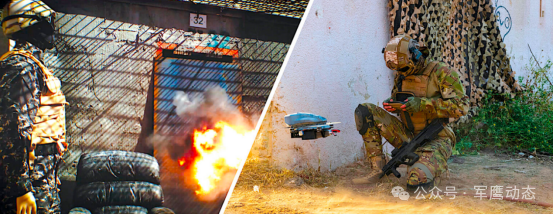 ▲ Drones have become crucial in warfare, especially in urban combat. In this photo, an Israeli soldier demonstrates a loitering munition designed for urban combat.
▲ Drones have become crucial in warfare, especially in urban combat. In this photo, an Israeli soldier demonstrates a loitering munition designed for urban combat.
A thorough study of urban operations in the Russia-Ukraine war shows that besieging large cities like Mariupol is challenging and often involves destroying the city and starving the population, actions that most Western nations would not accept. The Russians took 86 days, deploying 14,000 soldiers, using artillery and air power to defeat approximately 4,500 Ukrainian defenders.
Another option is that attacking a defended city is a confusing and bloody affair, as seen in Kyiv, Ukraine, in February 2022, where Russia rapidly overwhelmed Ukrainian military forces.
Aside from the Russian military and the Chinese People’s Liberation Army, few armies have the manpower or intent to conduct urban combat in the old way. Winning urban battles in the 21st century requires new thinking, but most importantly, it requires effective Intelligence, Surveillance, and Reconnaissance (ISR) that can be used to locate targets for drones, sensors, and shooters.
Not Just Sensors, but Perception and Strikes
ISR sensors work best in open terrain. Buildings and reinforced concrete structures suppress line-of-sight sensors in urban environments. Some new technologies will enhance the ability of sensor systems to overcome this issue in urban settings. Traditional kill chains use separate sensor and shooter systems, which involve a time lag that allows targets to evade strikes.
In the three wars mentioned above, the time lag in the kill chain reduced the effectiveness of kinetic strikes. To reduce this lag, “sensor-to-shooter” systems have been developed, allowing users to quickly qualify a target as a legitimate target and then strike it using a range of possible assets. These can shorten the kill chain to a few seconds. Further efforts to shorten the kill chain have led to the integration of sensors and effectors into a single package.
Israeli tech companies have proven themselves to be leaders in developing robotic systems and loitering munitions. For example, Israeli-made Harop and Orbiter loitering munitions played a key role in Azerbaijan’s decisive victory in the Second Nagorno-Karabakh War, which lasted 44 days. Israel-based defense company Elbit Systems is leveraging this experience to create networked, autonomous robots to dominate the battlefield.
Elbit’s Legion-X system connects all types of multi-domain robotic sensors into a network cluster. Elbit states, “Legion-X is an autonomous networked combat solution based on robotic platforms and heterogeneous clusters… Legion-X provides advantages in peer/near-peer adversary combat scenarios, capable of coordinating the deployment of swarms of interconnected, heterogeneous autonomous platforms and payloads.”
The Legion-X network creates a “one-to-many” control of aerial and ground robotic weapons (one operator controls dozens of systems). Wi-Fi is used to exchange voice, data, and streaming video. In areas without Wi-Fi, Elbit’s broadband tactical data communication network can provide Software Defined Radio (SDR) networks through land or air systems. To enhance resilience, the network covers all NATO mobile bands and does not rely on Global Positioning System (GPS).
A key element of the Legion-X concept is the LANIUS loitering munition built for urban warfare. LANIUS is an over-the-horizon (BLOS) loitering munition with autonomous perception and strike capabilities. The system communicates with other connected systems in the network via Wi-Fi or SDR networks. Onboard computing and artificial intelligence (AI) help LANIUS avoid collisions with other objects while simultaneously locating and mapping its environment.
LANIUS is a short-range weapon with a flight time of 7 minutes, capable of carrying lethal or non-lethal payloads, flying at speeds of up to 20 meters/second or hovering in place. Mini-drones can also be launched from larger, more distant drone platforms. To clear buildings, dozens of LANIUS mini-drones equipped with high-explosive warheads can autonomously launch from a carrier platform, searching for and destroying targets. In future urban combat, soldiers may use drones like LANIUS in a manner similar to how grenades were used in WWII room-clearing operations, with these smart drones providing real-time video inside buildings and creating explosive effects.
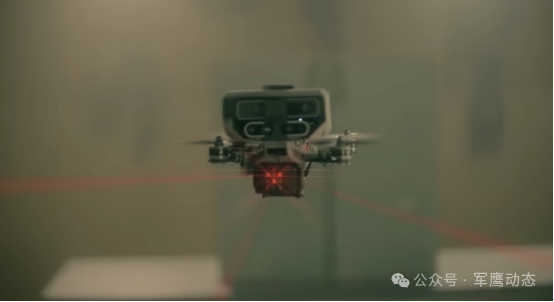 ▲ LANIUS mini-drone
▲ LANIUS mini-drone
Drone Swarm ISR and Strikes
Every combat operation involves finding the enemy and then striking them. Regardless of how advanced the weapons are, harming human combatants in urban combat will result in casualties. As the fighting in urban areas in Ukraine has shown, a city represents a complex battlefield, fraught with dangers and difficult to conquer.
Urban terrain provides defensive forces with concealment, strong positions, and opportunities for ambushes on every building and every road. In the ongoing Russia-Ukraine war, the Russians have destroyed large towns with various forms of artillery before deploying troops. New thinking is needed to avoid this situation, and the U.S. Defense Advanced Research Projects Agency (DARPA) is working to provide solutions.
The U.S. Defense Advanced Research Projects Agency (DARPA) is determined to develop and leverage artificial intelligence to enhance urban ISR and combat operations with military robotic systems. In March 2021, Dr. Matt Turek, Deputy Director of DARPA’s Information Innovation Office, announced at a defense preparedness seminar that artificial intelligence is critical to DARPA’s 120 most important projects. Dr. Turek added that DARPA is developing an “explainable artificial intelligence” project (XAI) to achieve “third-wave AI systems, in which AI understands the context and environment in which it operates and builds basic explanatory models over time to describe phenomena in the real world.” This will create a system supported by AI that learns its environment to perform various tasks.
The third wave of AI enables computers to become capable partners with human combatants, rather than just tools. In February 2023, DARPA’s Air Combat Evolution program demonstrated an example of human-machine collaboration, allowing an F-16 fighter jet to operate independently with artificial intelligence. The aircraft was renamed X-62A or VISTA (Variable In-flight Simulator Test Aircraft) and conducted several flights under AI control. Such AI will make drones the “loyal wingmen” of manned aircraft. When used in conjunction with loitering munitions, AI will enhance the autonomy and collaborative swarming of unmanned aerial vehicles. These tests have prioritized networked drones as a key focus of U.S. Air Force funding and development.
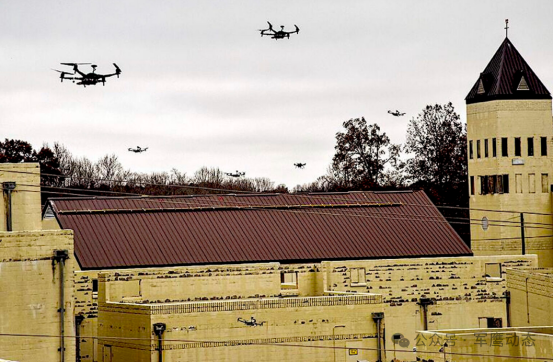 ▲ In a scenario conducted on November 16, 2021, a swarm of drones scanned the Cassidy target complex at Fort Campbell, which was the final field experiment of the Offensive Swarm-Enabled Tactics (OFFSET) project designed by DARPA, allowing infantry units to use swarms of over 250 drones to accomplish various mission objectives in urban environments.
▲ In a scenario conducted on November 16, 2021, a swarm of drones scanned the Cassidy target complex at Fort Campbell, which was the final field experiment of the Offensive Swarm-Enabled Tactics (OFFSET) project designed by DARPA, allowing infantry units to use swarms of over 250 drones to accomplish various mission objectives in urban environments.
DARPA’s Offensive Swarm-Enabled Tactics (OFFSET) program addresses the ISR and strike issues of drone swarms in urban combat. According to the DARPA website, the OFFSET program “envisions future small infantry units using swarms composed of 250 or more unmanned aerial systems and/or unmanned ground systems to accomplish diverse tasks in complex urban environments. By leveraging and integrating emerging technologies in swarm autonomy and human swarm collaboration, the program aims to achieve rapid development and deployment of breakthrough capabilities.”
The concept combines collaborative, networked drone swarms and unmanned ground sensors with soldiers, providing unparalleled perception and strike capabilities for urban combat. Swarms of drones will act as sensors and shooters, isolating buildings or areas in the urban combat space and conducting urban raids. Future urban combat will be filled with flying and rolling robotic systems, rather than flooding soldiers into cities and incurring the resulting massive casualties. In short, the large-scale use of networked, autonomous unmanned systems will change the way wars are fought.
Dominating the Skies and Stratosphere
Real-time situational awareness is a force multiplier in urban combat, and ISR drones are fundamental tools for every modern military force. For just a few thousand dollars, anyone can purchase inexpensive disposable small drones. Almost every country manufactures drones, with the most expensive and capable systems produced by China, the U.S., Europe, Israel, Turkey, and Iran.
China is a superpower in drones, manufacturing 80% of the commercial drones sold globally, most of which are unmanned. One Chinese company, DJI Technology, based in Shenzhen, produces 70% of the world’s consumer drones.
DJI commercial drones have played a significant role in the Russia-Ukraine war, including most of the drones used by Ukraine’s Aerorozvidka drone unit (Ukrainian: Аерораозвадка, meaning aerial reconnaissance). Aerorozvidka is a military unit of drone operators in the Ukrainian army, who were drone enthusiasts before the war but have now become professional drone pilots.
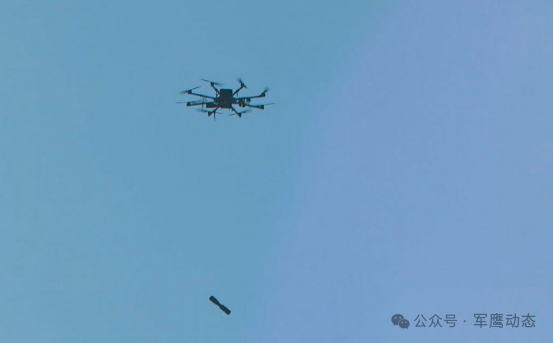 ▲ The Ukrainian Aerorozvidka drone unit is using drones for intelligence, surveillance, reconnaissance, and strike missions to defeat Russian armed forces. In this photo, an R18 drone is undergoing bombing tests at the Shyrokyi Lan range in 2020.
▲ The Ukrainian Aerorozvidka drone unit is using drones for intelligence, surveillance, reconnaissance, and strike missions to defeat Russian armed forces. In this photo, an R18 drone is undergoing bombing tests at the Shyrokyi Lan range in 2020.
Drones provide military capabilities at low costs. Small quadcopters, ranging from hundreds to thousands of dollars, can be used to observe urban blocks and maneuver inside buildings, but it is also necessary to observe the urban combat space from medium to high altitudes. Systems operating at higher altitudes provide a means to expose enemy forces not inside buildings or hidden underground.
Manned aircraft can provide medium to high-altitude ISR, but in high-threat environments, this task is performed by High Altitude Long Endurance (HALE) and Medium Altitude Long Endurance (MALE) unmanned aerial vehicles. However, when considering urban combat in large cities or megacities, it is insufficient to only consider medium to high-altitude ISR. Persistent ISR is needed. To provide persistent ISR, a multi-layered strategy is required, including the use of satellites in the space layer, stratosphere, and mid to upper atmosphere.
Satellites in orbit around the Earth, whether in geostationary or low Earth orbit, provide ISR from space. Manned aircraft and MALE and HALE UAVs provide atmospheric coverage. This gap seems to exist in the second layer, the stratosphere, extending from 7-20 kilometers above sea level (depending on latitude) to about 50 kilometers.
To bridge this gap, the U.S. Army has been experimenting with stratospheric ISR unmanned systems. Vehicles operating in the stratosphere can capture high-resolution images, transmit and relay communications with relatively low latency, accelerate video feeds and data processing, provide early warning of enemy threats, and can disrupt enemy radar and communication systems better than satellites in space. These capabilities are crucial for operations in large cities.
In 2021, when U.S. Central Command (CENTCOM) and the U.S. Navy Surface Warfare Center (NSWC) released a request for solutions (RFS) using stratospheric balloons and solar-powered glider drones, the U.S. military emphasized its interest in the stratosphere. Tests conducted over the past five years have focused on operations in the stratosphere to enable persistent operations in unpermitted environments.
One effort to establish a foothold in the stratosphere is the development of a stratospheric high-altitude drone called Zephyr (Solar High Altitude Pseudo Satellite, SHAP-S), manufactured by Airbus and designed by QinetiQ in the UK. Airbus describes Zephyr as a “solar high-altitude pseudo-satellite” that can be launched on demand almost anywhere.
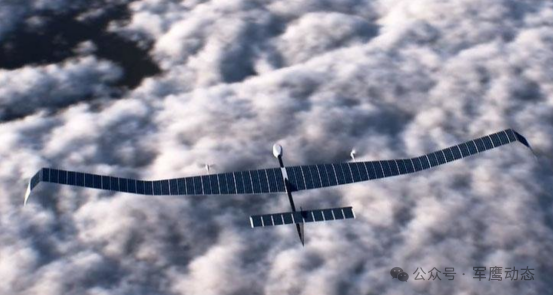 ▲ The Zephyr (Solar High Altitude Pseudo Satellite) stratospheric high-altitude solar drone designed by QinetiQ in the UK, with a wingspan of 22.50 meters; gross weight of 53 kilograms; payload of 2.5 kilograms; powered by two 0.45 kW (0.60 hp) custom permanent magnet synchronous motors from Newcastle University.
▲ The Zephyr (Solar High Altitude Pseudo Satellite) stratospheric high-altitude solar drone designed by QinetiQ in the UK, with a wingspan of 22.50 meters; gross weight of 53 kilograms; payload of 2.5 kilograms; powered by two 0.45 kW (0.60 hp) custom permanent magnet synchronous motors from Newcastle University.
Zephyr-8 is one of the latest models of this ultra-lightweight carbon fiber drone being tested by the U.S. Army. It weighs less than 75 kilograms and has a wingspan of up to 25 meters. The wings and tail surfaces are large solar panels that power the aircraft during the day and charge lithium-sulfur batteries for nighttime operations. Zephyr is very light, and when its two propeller-driven engines lift it into the air, six to eight people can carry it for launch.
In the summer of 2022, the U.S. Army’s Zephyr-8 prototype flew at an altitude of 18,288 meters over the southern U.S., the Gulf of Mexico, and South America for 64 days until it crashed in the Arizona desert on August 8, 2022. Aside from the “event that led to its unexpected termination,” the U.S. Army did not disclose the exact cause of the crash.
Australia also purchased a Zephyr, which crashed on September 28, 2019, when it ascended to 2,438 meters and underwent a series of uncontrolled turns, failing due to air turbulence, spiraling down, and disintegrating during descent. The official cause of the crash was determined to be unstable atmospheric conditions.
From the above, it is evident that future urban operations will include not only traditional air superiority control but also control of the stratosphere.
Placing sensors and drones in the stratosphere is an increasingly growing military demand. In most military operations, combining expensive high-end systems with lower-cost but powerful low-end systems creates a “high-low” combination that achieves a winning balance. Balloons can be part of the “high-low” solution for urban operations and can be configured to support swarms of drones with Wi-Fi connectivity, networking drones in urban canyons and similar spaces.
This type of “high-low” hybrid provides redundancy and resilience and is cheaper than manned flights or HALE and MALE unmanned systems. The latest Light Airborne (LTA) systems can carry large, complex ISR and communication packages, providing persistent surveillance, network connectivity, and electronic warfare (EW) support over urban areas. Military LTA vehicles, known as aerostats, can operate in the stratosphere, providing ISR for counter-unmanned aerial vehicle (C-UAV) defense.
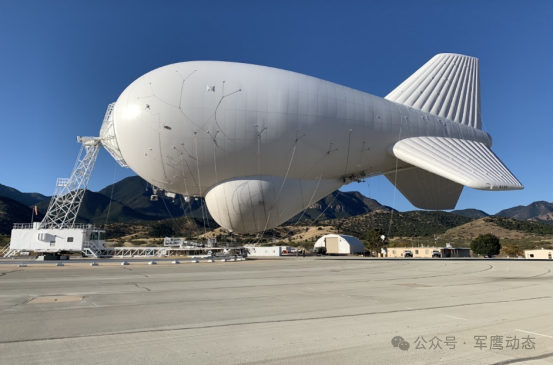 ▲ The U.S. military has been using aerostats for years to provide real-time, persistent intelligence, surveillance, and reconnaissance (ISR) information. In the above photo, the U.S. 84th Radar Evaluation Squadron (RADES) conducted analysis and optimization of the tethered aerostat radar system (TARS) on November 13, 2019, at Fort Huachuca, Arizona, to support the Department of Homeland Security (DHS) and Customs and Border Protection (CBP).
▲ The U.S. military has been using aerostats for years to provide real-time, persistent intelligence, surveillance, and reconnaissance (ISR) information. In the above photo, the U.S. 84th Radar Evaluation Squadron (RADES) conducted analysis and optimization of the tethered aerostat radar system (TARS) on November 13, 2019, at Fort Huachuca, Arizona, to support the Department of Homeland Security (DHS) and Customs and Border Protection (CBP).
Aerostats can be tethered or free-flying. These high-altitude balloons operate above aircraft height but below satellite height, from 18,288 meters to 30,480 meters above ground. Lockheed Martin is one of the leading defense companies involved in military aerostats. The company collaborated with the U.S. Navy to produce military balloons before World War II. The U.S. uses tethered tactical aerostats at lower altitudes for surveillance along the southern border to combat drug smuggling.
Since 2013, the Lockheed Martin 420K Aerostat system has been the only ISR and communication balloon used daily by the U.S. until the Biden administration cut funding and decided to retire it by the end of 2023. Another tactical aerostat model from Lockheed Martin is the 74K Aerostat, designed for low-altitude military persistent surveillance and communication. This aerostat is 35 meters long and tethered by a fiber optic transmission cable. It can carry a payload of 500 kilograms.
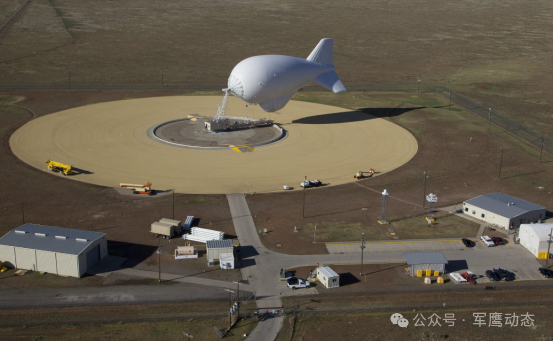 ▲ The 74K persistent threat detection system aerostat developed by Lockheed Martin.
▲ The 74K persistent threat detection system aerostat developed by Lockheed Martin.
Higher-flying vehicles can provide significant wide-area surveillance and communication advantages for urban combat operations. Lockheed Martin’s High Altitude Airship (HAA) can operate in the stratosphere and provide capabilities for unmanned persistent and continuous geostationary ISR, electronic warfare, and communication over urban areas. Due to its typical operating altitude, most short-range air defense systems are unlikely to shoot it down. No tether is required, as high-altitude airships (HAA) can be maneuvered in the airspace by ground stations or satellite relays.
Common payloads for aerostats include surveillance radars, inertial navigation systems, thermal imaging and daytime cameras, as well as electronic intelligence and communication intelligence packages. While the U.S. does not arm balloons and has no intention to do so, other countries may not hesitate. Armed aerostats operating in the stratosphere could become platforms for precision bombing.
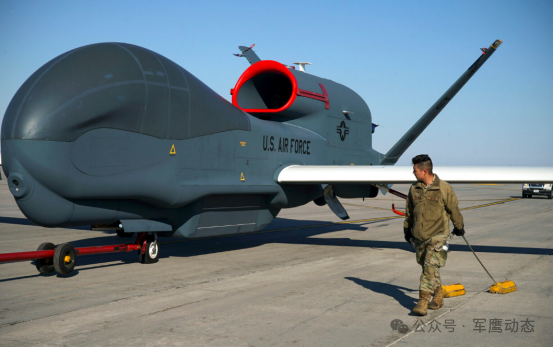 ▲ The U.S. Air Force expects to replace its Global Hawk fleet with more modern and powerful systems by 2027, as the Block 40 Global Hawk fleet cannot survive in modern air defense. In this photo, an RQ-4 Global Hawk is being towed across the flight line at the U.S. Air Force Base in Fort Bragg, North Carolina, on October 23, 2020.
▲ The U.S. Air Force expects to replace its Global Hawk fleet with more modern and powerful systems by 2027, as the Block 40 Global Hawk fleet cannot survive in modern air defense. In this photo, an RQ-4 Global Hawk is being towed across the flight line at the U.S. Air Force Base in Fort Bragg, North Carolina, on October 23, 2020.
ISR and Strikes in the Next Urban Battle
The world is becoming increasingly dangerous. The likelihood of great power wars seems to be rising, along with the possibility of multiple major wars breaking out. In the current Russia-Ukraine war, urban combat is the primary backdrop of the fighting, and the main lesson of this battle is that urban combat is inevitable. While we hope to avoid fighting in cities, it is impossible, and we must prepare, train, and equip for it. Technology alone cannot meet the challenges of urban combat, but it provides an alternative for the bloody battles in Ukraine.
The future of ISR in urban combat spaces will be characterized by clustered perception and strike systems, as well as means to control the airspace and stratosphere over cities. Providing high-precision multi-domain ISR platforms within a safe range will improve networks, provide means to disrupt enemy systems, and enable drone operations to win urban battles. Artificial intelligence, miniaturization, and unmanned systems are driving these changes in warfare.
In the next decade, military forces will transition from an independent capability network to a system of systems. In a study titled “Robots on the Battlefield Part II – The Coming Swarm” by Paul Scherer in 2014, the author predicted: “Emerging robotic technologies will enable tomorrow’s forces to operate as a swarm, with greater mass, coordination, intelligence, and speed than today’s networked forces. Low-cost unmanned systems can be built in large numbers, ‘flooding areas’ and overwhelming enemy defenses with their sheer numbers. Networked, collaborative autonomous systems will be able to truly swarm—cooperating distributed elements to generate a coherent, intelligent whole.”
In urban combat, these unmanned systems will provide the mass, reconnaissance, and strike capabilities needed to win urban battles without excessive casualties. As armies deploy swarms of networked drones, these drones will provide ubiquitous ISR and strike capabilities. Dominance in warfare will soon belong to networked robotic platform swarms capable of autonomous perception, strikes, and disruption of enemy forces. These weapons are not cheap, but in the next war, they will trigger a transformation as significant as that of machine guns and tanks in the early 20th century. To adapt to these changing methods of warfare, we must think differently and act in a timely manner.


